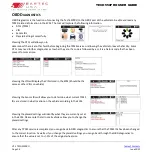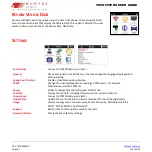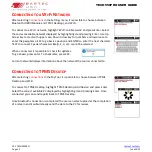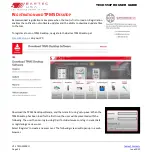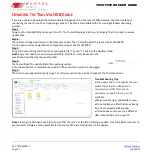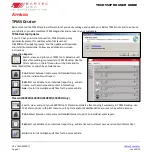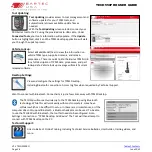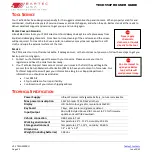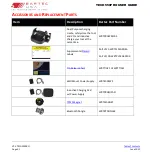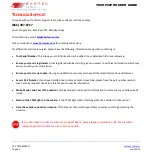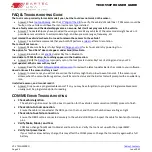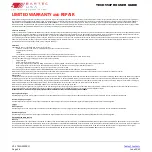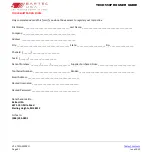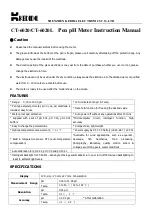
V1.2 TECH550PRO
Page 33
June 2022
TECH550PRO USER GUIDE
GLOSSARY
Audit Data:
is all the sensor and OBD data stored on the tool.
Bar:
units are commonly used in many Western European countries as a metric unit of pressure. 1 bar equals 100 kPa, or
approximately 14.5038 psi.
Bluetooth:
is a wireless technology standard for exchanging data over short distances from fixed and mobile devices.
Direct System
: is a TPMS that has RF sensors in the wheels.
Hi-Line or High-Line
is a TPMS type that has wheel-mounted receivers, which can force periodic transmissions from each
wheel sensor to keep a continuously updated pressure status. Vehicles using hi-line TPMS usually have a graphic display in
the dash.
Indirect System:
are the systems that do not have air pressure sensors inside the tires. Instead, they detect a low tire by
comparing relative wheel speeds via the Anti-Lock Brake System (ABS) wheel speed sensors.
Inductive Charging:
or Qi (also known as "wireless charging") uses an
two objects. This is usually done with a charging station. Energy is sent through an
device, which can then use that energy to charge batteries or run the device.
kPa (or kilopascal):
is a metric unit of pressure measurement widely used throughout the world. 1 kPa equals
approximately 0.145038 psi.
LF (Low Frequency):
is the
designation for radio frequencies in the range of 30 kHz–300 kHz, usually 125 kHz with
respect to TPMS technology.
Lo-Line or Low-Line
is a TPMS type that uses a passive receiver to listen for sensor transmissions. Vehicles using low-line
TPMS usually have a simpler dash display (e.g., a single on/off/flashing TPMS warning light).
Micro-USB (Universal Serial Bus):
is a smaller connector that is used by various handheld electronic devices. It is often
used for both
data connectivity as well as charging.
On-board diagnostics (OBD):
is an automotive term referring to a vehicle's self-diagnostic and reporting capability.
Modern OBD implementations use a standardized digital communications port to provide real-time data in addition to a
(DTCs), which allow one to rapidly identify and remedy malfunctions
within the vehicle.
OBDII:
is a newer system standard introduced by the
in the mid-'90s. All cars built since January 1
st
, 1996, have OBDII
systems.
PSI (pound per square inch or, more accurately, pound-force per square inch)
: is a unit of pressure based on avoirdupois
units, commonly used in the United States.
Relearn:
refers to the process of registering the sensor IDs to the vehicle’s ECM.
RKE (
):
an electronic lock that controls access to a vehicle without using a traditional key.
TPMS (Tire Pressure Monitoring System):
is an electronic system designed to monitor the air pressure inside the tires on
several types of vehicles.
UHF (Ultra High Frequency):
designation for radio frequencies in the range between 300 MHz and 3 GHz,
usually 315 and 433.92 MHz with respect to TPMS technology.
VIN (Vehicle Identification Number):
is a unique code used by the automotive industry to identify individual motor
vehicles.
WLAN or Wi-Fi
: Is a local area network that uses high frequency radio signals to transmit and receive data over distances
of a few hundred feet; uses Ethernet protocol.

